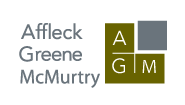Understanding the Chilling Effect on Mergers and Market Share
Background:
There is widespread concern that some of the recent amendments to the Competition Act will have a chilling effect on merger activity. These amendments represent a considerable change in the Canadian merger landscape and will undoubtedly make it more difficult for merging parties to obtain a clearance of a merger. As a result, businesses may hesitate to pursue mergers due to increased scrutiny and regulatory hurdles.
Concentration and Market Share
There has been an ongoing debate among scholars in anti-trust law and economics, concerning the degree to which one can rely on estimates of concentration to predict the impact of a merger on competition. Some commentators argue that there is a direct correlation between higher levels of concentration and a corresponding loss in consumer welfare.
Other commentators suggest that this approach is overly simplistic; a blunt instrument that either ignores or places insufficient emphasis on the behavior of firms in the market and hence on the likely competitive effects of a merger.
Prior to the amendments, the Competition Bureau relied on estimates of concentration and market share as well as behavioural characteristics to analyze the likely impact of a merger on competition. The Act also provided, however, that concentration and market share could not be relied on as the sole determinants of the likely impact of a merger. In other words, the structural characteristics of the relevant market must be accompanied by more granular evidence and analysis to determine whether the merger would substantially prevent or lessen competition.
In 1991, The Competition Bureau issued its first Merger Enforcement Guidelines (MEGs) outlining its approach to the analysis of mergers. Importantly, the MEGs indicated that concentration and market share are only the starting point for the analysis of the likely competitive effects of a merger. The MEGs refer to several other factors in the analysis of a merger, some of which are structural in nature such as entry barriers and other indicators of rivalry among competing firms.
The MEGs also provide that where the post-merger market share of the merging parties is no more than 35% of the relevant market, the Bureau will generally conclude that the merger does not substantially prevent or lessen competition. This is commonly known as the safe harbour and has been relied on by market participants and their external advisors in considering the Bureau’s likely response to a merger that increases concentration and market share.
In many respects, the current MEGs and, in all probability, the new MEGs that will be issued shortly, mirror the 2023 US horizontal merger guidelines. The US guidelines rely on arithmetic calculations of concentration and market share to create a presumption that the proposed merger is anti-competitive. More specifically, the US guidelines rely on the Herfindahl-Hershman Index (HHI) which is an arithmetic calculation that adds the sum of the squares of the market share of all suppliers in the market.
A simple example helps to understand HHI. Assume that the widget industry has five competitors, each of whom has 20% of the widget market. In this scenario, prior to the merger, the concentration level is 2000, being the sum of the squares of the market share of each of the five competitors. In a merger involving two suppliers, the number of suppliers is reduced to four, now having a 40% share of the market. The HHI increases from 2000 to 2800.
According to the US guidelines, where the HHI exceeds 1800, there is a rebuttable presumption that the merger is anti-competitive. The guidelines also include a sliding scale; as the level of concentration increases, more evidence is required to rebut the presumption. Additionally, the guidelines suggest that more granular evidence concerning the anticipated impact of the merger will be considered.
Summary of the amendments:
The amendments to the Act provide that where the Competition Tribunal finds that a merger or proposed merger results or is likely to result in a significant increase in concentration or market share, it shall also find that the merger prevents or lessens or is likely to prevent or lessen competition substantially, unless the contrary is proved by the parties to the merger.
A significant increase in concentration or market share is presumed to occur where the post-merger concentration and market share exceeds the amounts set out in the concentration index. The concentration index is defined to include a consideration of both HHI and market shares. Specifically, in calculating the concentration index, a significant increase in concentration or market share results, where the HHI of the merging parties is greater than 100 and the concentration of all the suppliers or customers is or is likely to be greater than 1800 or the market share of the merging parties is or is likely to be greater than 30%.
Implications for merger review
Prior to the amendments, the Competition Bureau would carefully analyze a merger in concentrated markets where the resulting post-merger market share exceeds 35%. As mentioned above, this analysis would include consideration of the factors referred to in the MEGs. Importantly, the Commissioner of Competition has not attempted to block a merger based solely on the estimates of concentration and market share.
That could and likely will change because the amendments have established a threshold of concentration and market share beyond which the merger will be presumed to substantially prevent or lessen competition. The Competition Bureau will rely on the amendments to oppose many more mergers than previously. This places a premium on careful analysis to respond to that anticipated increase in enforcement activity.
At this stage, there is an element of speculation in assessing what will become increasingly important. Moreover, we await the amended MEGs that will yield insight into the Bureau’s approach to the amendments. Nevertheless, among the considerations are the following:
First, there will be an increased emphasis on market definition because the definition of the product market is the cornerstone of estimates of concentration and market share. Simply put, the determination of the product market includes an assessment of substitutability. In determining the product market, the MEGs rely in part on a hypothetical monopolist test or HMT. The Competition Tribunal has endorsed this approach. This is not news. What is different is the increased role it will play in the analysis.
Second, what role will the concentration index play in merger analysis? We anticipate that the Competition Bureau will place considerably more weight on the estimates of concentration and market share than previously and correspondingly, an incentive to discount evidence rebutting the presumption. Additionally, the Bureau may also adopt a sliding scale like the US guidelines.
Put another way, the Bureau will rely on the concentration index to oppose more mergers and downplay evidence that rebuts the presumption. In simple terms, the Bureau is empowered by the amendments. The Commissioner of Competition has an incentive to exploit that power.
On the other hand, the Competition Tribunal may adopt a more nuanced approach; one in which concentration is not as important as the Commissioner suggests. In this scenario, there is likely to be considerable debate on the quantity and quality of the evidence that is required to rebut the presumption. Additionally, if the amended MEGs include a sliding scale, parties may ask the Tribunal to consider whether there is any basis in the Act for this interpretative approach.
Third, and this is closely related to the second point, how will the Tribunal view the existing jurisprudence concerning the role of concentration and market share in analyzing a merger or an alleged abuse of dominance? In at least one case involving an alleged abuse of dominance, for example, the Tribunal held that market shares of approximately 50% would not generally be conclusive concerning an alleged substantial prevention or lessening of competition. How can this conclusion be reconciled with a presumed substantial prevention or lessening of competition in a merger that exceeds the 30% market share threshold?
This evolving landscape raises questions about how existing jurisprudence will be reconciled with the new presumptions built into the Act. For a deeper look at how these policy shifts intersect with consumer welfare and enforcement trends, see “Competition If Necessary: Balancing Policy & Consumer Welfare in Canadian Competition Law”.
Conclusion
Taken together, the amendments are likely to give rise to considerable uncertainty in various sectors of the Canadian economy about the nature and scope of merger review and will, in all probability, have a chilling effect on mergers in Canada. This is not desirable in a country where mergers should be encouraged to ensure that the Canadian economy is more efficient and better positioned to counter the economic threat from the United States.












